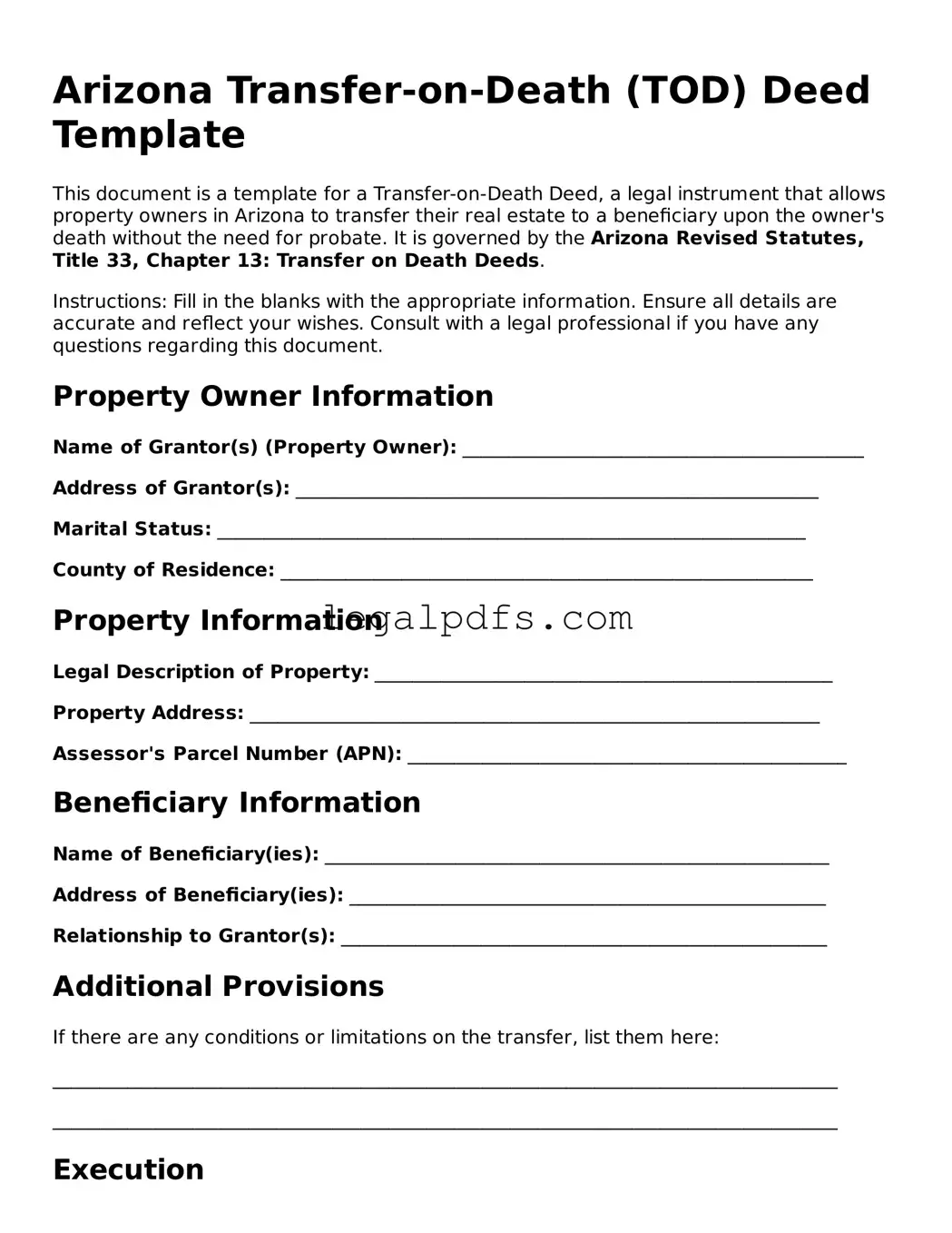Arizona Transfer-on-Death (TOD) Deed Template
This document is a template for a Transfer-on-Death Deed, a legal instrument that allows property owners in Arizona to transfer their real estate to a beneficiary upon the owner's death without the need for probate. It is governed by the Arizona Revised Statutes, Title 33, Chapter 13: Transfer on Death Deeds.
Instructions: Fill in the blanks with the appropriate information. Ensure all details are accurate and reflect your wishes. Consult with a legal professional if you have any questions regarding this document.
Property Owner Information
Name of Grantor(s) (Property Owner): ___________________________________________
Address of Grantor(s): ________________________________________________________
Marital Status: _______________________________________________________________
County of Residence: _________________________________________________________
Property Information
Legal Description of Property: _________________________________________________
Property Address: _____________________________________________________________
Assessor's Parcel Number (APN): _______________________________________________
Beneficiary Information
Name of Beneficiary(ies): ______________________________________________________
Address of Beneficiary(ies): ___________________________________________________
Relationship to Grantor(s): ____________________________________________________
Additional Provisions
If there are any conditions or limitations on the transfer, list them here:
____________________________________________________________________________________
____________________________________________________________________________________
Execution
This document must be signed in the presence of a notary public to be legally binding.
Date of Execution: ____________________________________________________________
Grantor's Signature: __________________________________________________________
Printed Name: _________________________________________________________________
Notary Acknowledgment
This section to be completed by a notary public:
State of Arizona
County of __________________________
On __________________ (date), before me, ___________________________________ (name of notary), personally appeared ___________________________ (name(s) of signatory), personally known to me or proved to me on the basis of satisfactory evidence to be the individual(s) whose name(s) is/are subscribed to the within instrument and acknowledged to me that he/she/they executed the same in his/her/their authorized capacity(ies), and that by his/her/their signature(s) on the instrument, the individual(s), or the entity upon behalf of which the individual(s) acted, executed the instrument.
Notary Signature: _____________________________________________________________
Printed Name: _________________________________________________________________
Commission Expires: ___________________________________________________________
